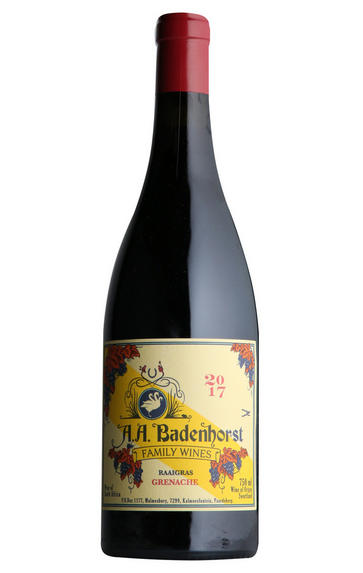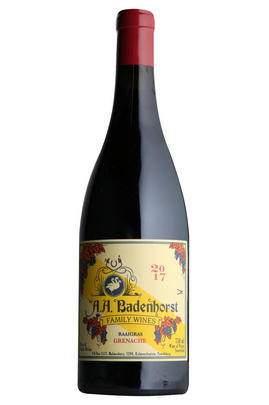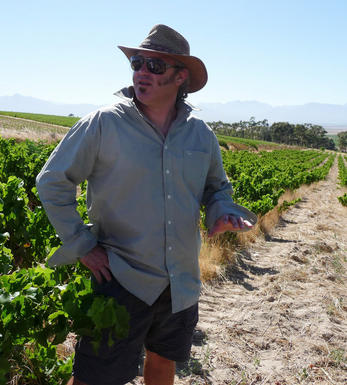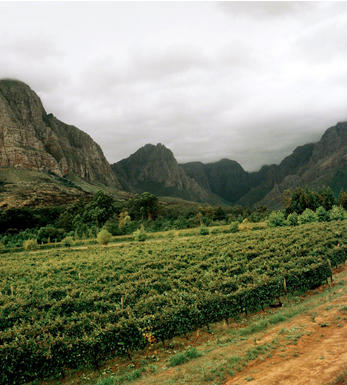
2017 A.A. Badenhorst Family Wines, Raaigras Grenache, Swartland, South Africa

About this WINE

A. A. Badenhorst
Andre Adriaan Badenhorst’s grandfather was the general manager at Groot Constantia wine estate for 46 years. His father was born there and farmed on neighboring Buitenverwachting and Constantia Uitsig for many years. Adi grew up between the vineyards and spent his time picking (stealing) grapes. “It all started when Jean Daneel, then winemaker at Buitenverwachting, let me make my first wine when I was thirteen,” Adi recalls.
After completing his studies at Elsenburg, Adi worked a few harvests at Chateau Angelus, Alain Graillot in the north Rhone, France and Wither Hills in New Zealand and did stints at local cellars Simonsig, Steenberg, Groote Post and nine years as winemaker at the esteemed Stellenbosch estate, Rustenberg.
In 2008 he packed it all in and bought a 60-hectare piece of land in the Paardeberg with his cousin Hein. They now proudly farm together, practice biological farming and make natural wines in the traditional manner, vinifying in old foudres and cement vats.
On Kalmoesfontein it is back to basics, using traditional winemaking equipment and old cement vats.. “We make wines with immense character. We’re using what we can afford. We are making the best wines we can. And we are having great experiences. I want to make something, involving interaction from my family.”
Today Adi Badenhorst is an award winning winemaker, member of the Cape Winemakers Guild, and one of the growers who is really putting the Swartland region on the map as a source of fine wine.

Swartland
After Stellenbosch, the west coast district of Swartland (25 miles due north of Cape Town, between the towns of Malmesbury and Piketberg) now ranks as the Cape's most exciting wine-producing district.
Settled initially by nomadic Khoikhoi from Namibia, the Dutch brought trade and vines to the region in the 17th century. Viticulture was developed only more recently.This contrasts with an ancient geology which has brought a mix of shale, arenite sandstone and granite soils air-conditioned by the Atlantic Ocean nearby.
Chenin Blanc and Shiraz seem to do best, as exemplified by the wines of Eben Sadie and Mullineux.

Grenache/Garnacha
Grenache (Noir) is widely grown and comes in a variety of styles. Believed to originate in Spain, it was, in the late 20th century, the most widely planted black grape variety in the world. Today it hovers around seventh in the pecking order. It tends to produce very fruity, rich wines that can range quite widely in their level of tannin.
In many regions – most famously the Southern Rhône, where it complements Syrah and Mourvèdre, among other grapes – it adds backbone and colour to blends, but some of the most notable Châteauneuf du Pape producers (such as Château Rayas) make 100 percent Grenache wines. The grape is a component in many wines of the Languedoc (where you’ll also find its lighter-coloured forms, Grenache Gris and Blanc) and is responsible for much southern French rosé – taking the lead in most Provence styles.
Found all over Spain as Garnacha Tinta (spelt Garnaxa in Catalonia), the grape variety is increasingly detailed on wine labels there. Along with Tempranillo, it forms the majority of the blend for Rioja’s reds and has been adopted widely in Navarra, where it produces lighter styles of red and rosado (rosé). It can also be found operating under a pseudonym, Cannonau, in Sardinia.
Beyond Europe, Grenache is widely planted in California and Australia, largely thanks to its ability to operate in high temperatures and without much water. Particularly in the Barossa Valley, there are some extraordinary dry-farmed bush vines, some of which are centuries old and produce wines of startling intensity.


Buying options
Add to wishlist
wine at a glance
Delivery and quality guarantee